 |
 |
 |
| |
Life Extectancy, Mental Comorbidities, Inflammation, /Anti-Inflammatories Drug Research - Life Expectancy Lags in Some HIV Groups: Black MSM, Drug Injectors, HCV+
|
| |
| |
25th Conference on Retroviruses and Opportunistic Infections (CROI), March 4-7, 2018, Boston
scroll down to middle of report where you will see links & discussion around the plenary session at CROI on Life Expectancy & Ind=flammation, which is followed by the pics of the poster which is the subject of this report.
from Jules: remember ALL these Life Expectancy studies are ESTIMATE & PROJECTIONS - there is no way these include the affects of comorbidities, frailty etc. And everyone has different numbers & types & comorbidities & responds differently to them, and frailty too, some have it, some don't, and the response to frailty varies. AND HIV+ get comorbidities earlier than HIV- and in greater numbers. So there is no way these estimates can accurately predict actual Life Expectancy and then of course there is quality of life which will be worse in HIV+ and pyscho-social issues like depression, substance abuse, social isolation, suicide ideation, all worse in HIV+; and cancers among older HIV+ occur in greater numbers compared to HIV- and sometimes access to cancer treatment is worse in HIV+; cervical cancer is more of a problem in HIV & so is anal HPV in men, so how can these studies be relied on to predict mortality, they can't. I don't know why researchers persist in doing these studies.

Novel Therapies Targeting Inflammation at CROI, reviewed in
CROI 2018: Comorbidities and Inflammation - David H Shepp, MD Associate Professor of Medicine Zucker School of Medicine at Hofstra-Northwell Manhasset, NY - (03/13/18)
Mark Mascolini
Life expectancy in HIV-positive North Americans rose steadily from 2005-2007 to 2012-2015, according to a 92,451-person NA-ACCORD analysis [1]. But life expectancy with HIV lagged persistently in certain groups, including black versus white men who have sex with men (MSM), people who inject drugs (PWID) versus noninjectors, and people coinfected with HCV/HIV versus HIV alone. Across the three study periods, non-Hispanics did not catch up with Hispanics in life expectancy. But the study tracked similar life-expectancy gains in black and white women with HIV.
Life expectancy in antiretroviral-treated people with HIV is approaching that in the general population. But the US National HIV/AIDS Strategy underlines worse health outcomes in some groups, including black MSM, black women, and PWID. NA-ACCORD researchers conducted this study to estimate life expectancy in these groups and others.
The analysis involved 92,451 US or Canadian NA-ACCORD participants who started antiretroviral therapy (ART) sometime between January 2005 and December 2015. Follow-up began in January 2005 or when ART began and continued until death, loss to follow-up, or December 31, 2015. Researchers used standard 10-year abridged table methodology to estimate life expectancy at age 18 for various demographic and behavioral groups.
At baseline one third of participants were 18 to 39 years old, one third 40 to 49, and one third 50 or older. Most participants, 84%, were men, 40% black, 38% white, and 11% Hispanic. Almost one quarter, 23%, had HCV infection. Median baseline CD4 count stood at 345, and 24% of cohort members had a baseline CD4 count below 200.
From 2005-2007 to 2012-2015, life expectancy at age 18 in people with HIV rose slightly more in women (37.4 to 63.5 additional years after 18) than in men (36.9 to 56.3 additional years). Hispanics with HIV made steady gains in life expectancy at age 18 across the three study periods, from 40.7 to 63.3 additional years. Life expectancy in non-Hispanics improved at a similar rate (36.1 to 55.9 additional years), but non-Hispanics never closed the survival gap with Hispanics. The researchers observed that improving life expectancy among Hispanics versus non-Hispanics with HIV reflects similar trends in the general population.
Life expectancy in 18-year-old women with HIV improved at about the same pace in white women from 2005-2007 to 2012-2015 (38.1 to 60.9 additional years) and in black women (36.3 to 62.9 additional years). But improving life expectancy in black MSM (35.9 to 65.4 additional years`) consistently lagged improvements in white MSM (53.5 to 79.4 years additional years).
PWID had the lowest life expectancy of any group from 2005-2007 to 2012-2015 (25.4 to 43.5 additional years), and that gain did not close the gap with non-PWID (40.3 to 60.5 additional years). Similarly, life expectancy in people coinfected with HCV and HIV rose less across the study periods (32.7 to 46.4 additional years) than life expectancy in HIV-positive people without HCV (38.9 to 62.0 additional years).
The NA-ACCORD team concluded that "the impact of the 'treat all' era may further increase life expectancy, but not narrow the persistent differences in life expectancy for Black (vs White) MSM, PWID (vs non-PWID), and those with HCV (vs. uninfected)."
In 2014 in the United States total life expectancy at age 20 stood at 77.3 years in men and 81.9 years in women [2]. That compares with estimates of 74.3 at age 18 in antiretroviral-treated men with HIV and 81.5 at age 18 in treated women with HIV. But the researchers stressed that their analysis may overestimate life expectancy in people with HIV because the study group could underrepresent people less likely to remain in care after starting ART.
References
1. Althoff KN, Moore RD, Gill MJ, et al. Life expectancy in key populations of adults with HIV in the US and Canada. 25th Conference on Retroviruses and Opportunistic Infections (CROI). March 4-7, 2018. Boston. Abstract 903.
2. Kochanek KD, Murphy SL, Xu J, Tejada-Vera B. Deaths: final data for 2014. National Vital Statistics Report. 65(4). https://www.cdc.gov/nchs/data/nvsr/nvsr65/nvsr65_04.pdf
--------------------------
Life Expectancy, Inflammation, Comorbidities, Mental Comorbidities
in Keri Althoff's talk as part of plenary session at CROI - SYMPOSIUM: LIFE EXPECTANCY AT 25 - she showed these 2 slides, 1- showing prevalence of mental comorbidities in HIV+ vs general population bearing in mind the many diverse types of HIV+ populations within which the prevalence & affects of these mental comorbidities will vary. In slide just below this 1st one she discussed the affect of mental comorbidities on care saying numbers of days of depression relates to missed visit appointments & detectable viral load. Other studies have linked all these to viral load detectable & this leads to increased physical comorbidities. In the general population depression causes increased inflammation, result in stress hormone abnormalities and cause metabolic abnormalities; depression has been linked to a number of comorbidities as depicted in 3rd slide just below. Althoff urged that we include mental comorbidities in our studies - really! She went on to away how ART reduces comorbidities risk but rates of CVD & cancers are still higher even on ART in HIV vs general population. She turned to social isolation - see slide below - saying hoe in HIV+ social isolation is a killer and she went on to show how younger HIV+ adults may have as much if to greater social isolation
http://www.croiwebcasts.org/console/player/37257?mediaType=slideVideo&&crd_fl=1&ssmsrq=1521830953426&ctms=5000&csmsrq=871
And Caroline Sabin gave a talk on life expectancy where she showed this slide from the general population where PSS, perceived stress scale & increases mortality regardless of how many comorbidities a person has, and she discussed the importance of mental health in mortality . Then she showed slide below from UK CHIC where says it shows with HIV+ men & women with undetectable VL & CD4 achieved over 350 life expectancy "its expected" to be as good as the general population, which I do not believe, and she shows r=this in a slide: that life expectancy is based on modeling & historic date, which is why none of these life expectancy studies can be true because they are NOT eve trying to model in the affects of comorbidities & frailty, which is very difficult to accurately do.
http://www.croiwebcasts.org/console/player/37256?mediaType=slideVideo&&crd_fl=1&ssmsrq=1521834577754&ctms=5000&csmsrq=806
The bottom line is we are seeing much greater rates of CVD & cancers and other comorbidities in HIV+ in older people in particular, and frailty is setting in at earlier ages & at higher rates in older HIV+..
Jason Baker discussed inflammtion & showed this slide that the strength of the association of these inflammations markers & mortality is much stronger in HIV+ than the general population, from START 10 tears ago. He also lists the anti-inflammatories in research.
http://www.croiwebcasts.org/console/player/37258?mediaType=slideVideo&&crd_fl=1&ssmsrq=1521837572531&ctms=5000&csmsrq=938

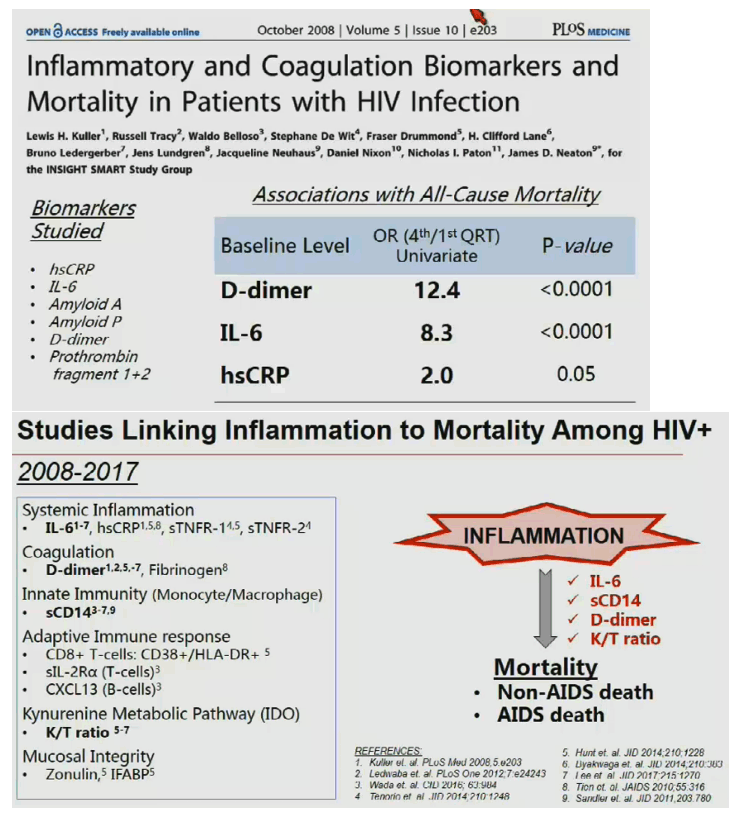

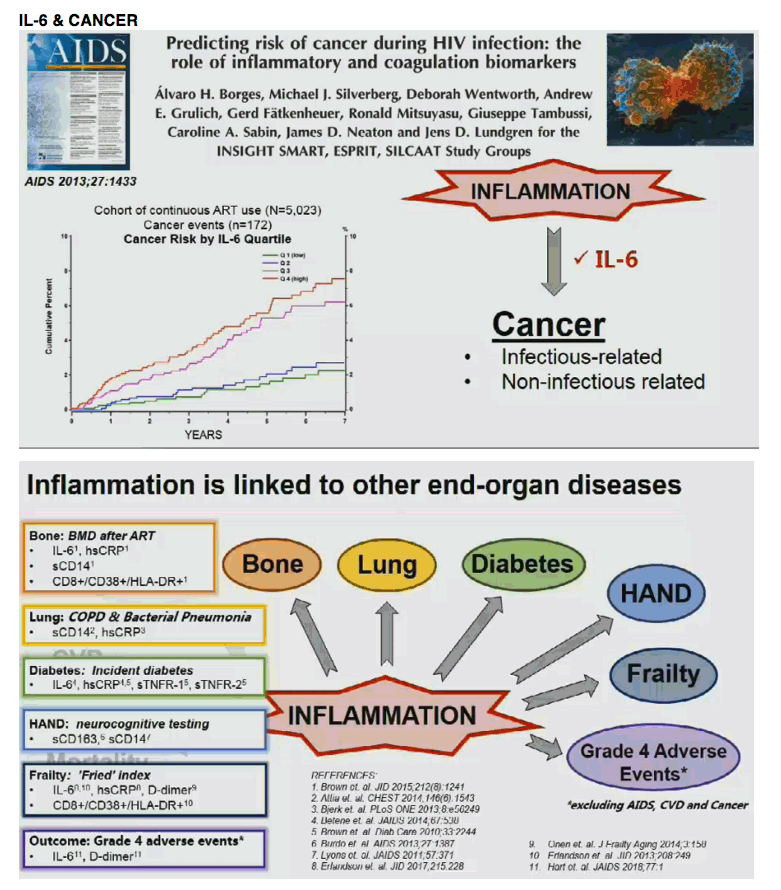
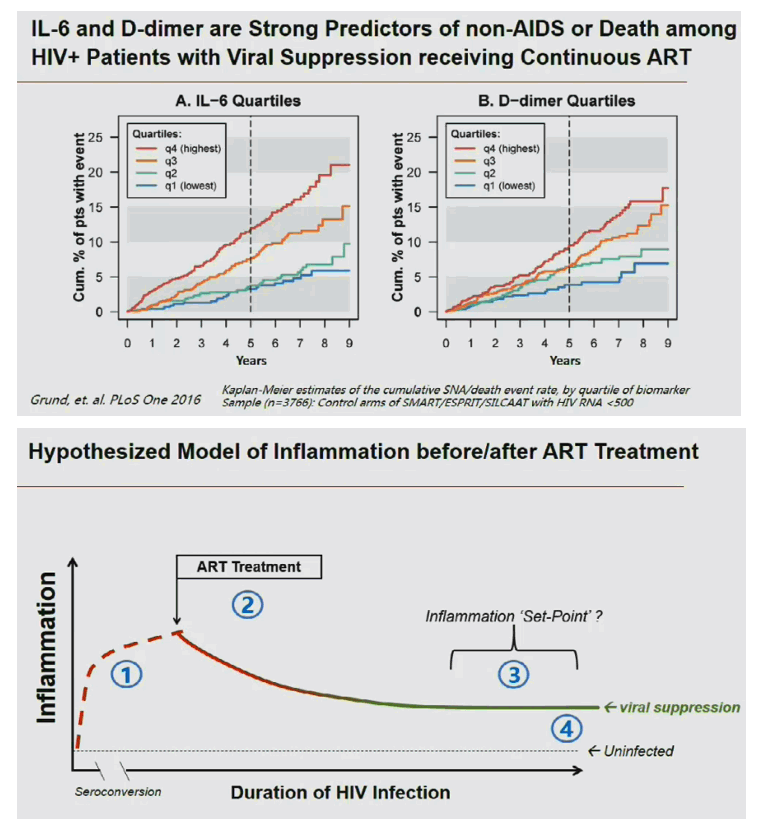
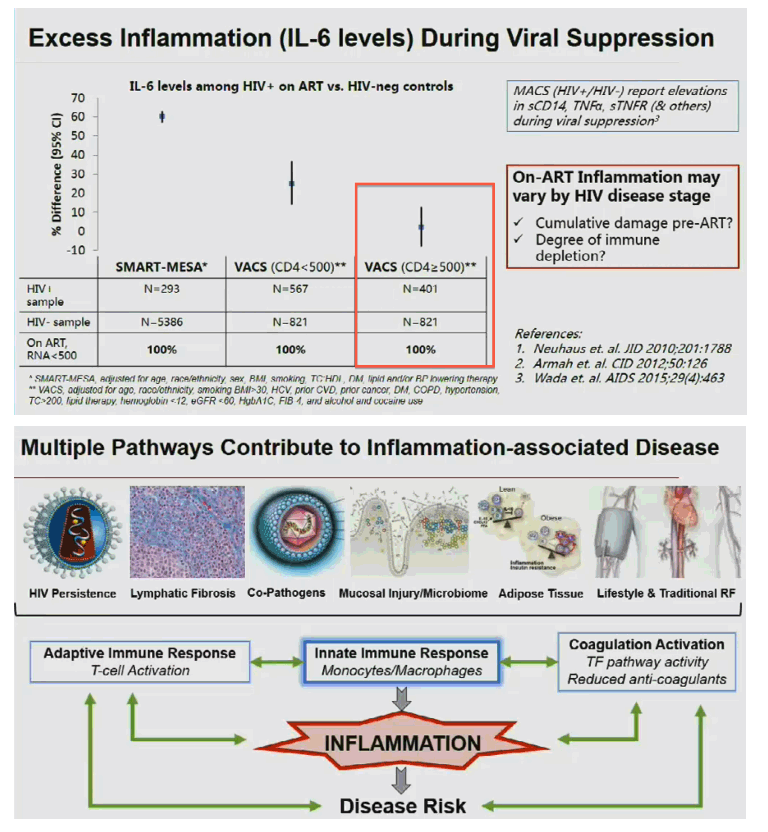
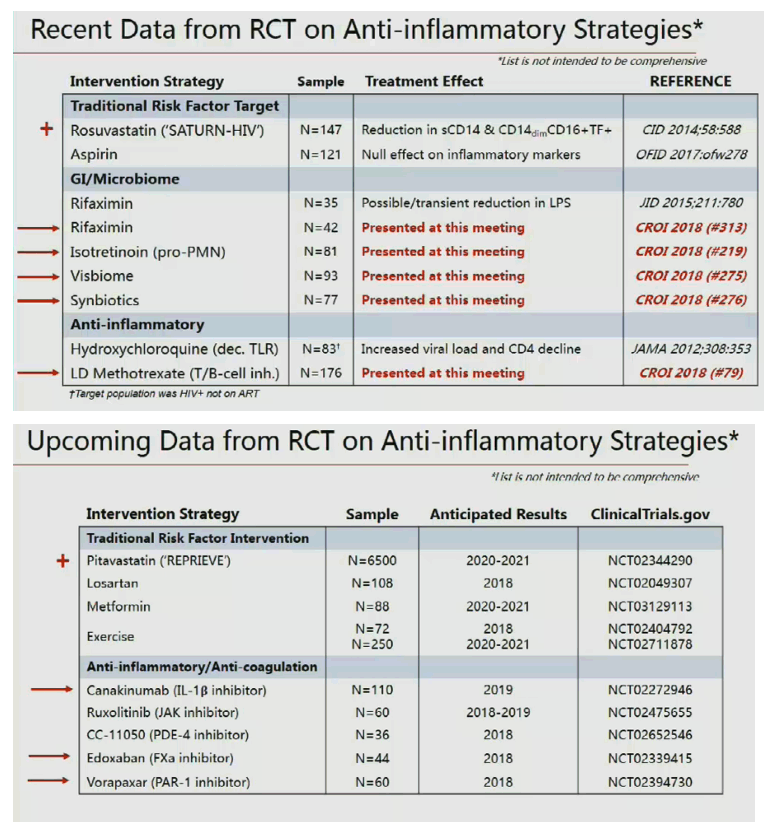
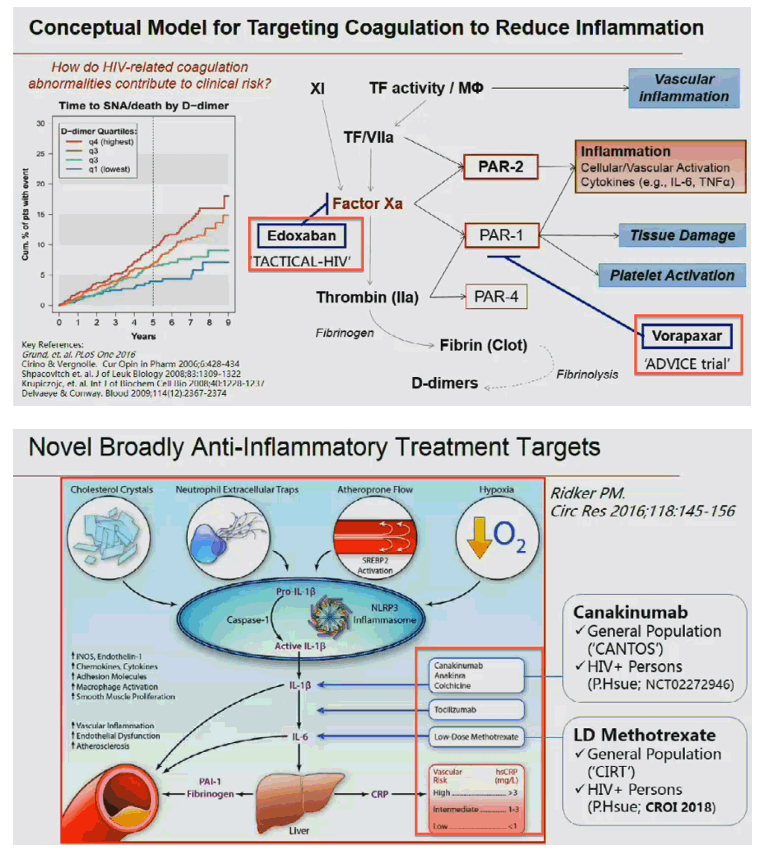
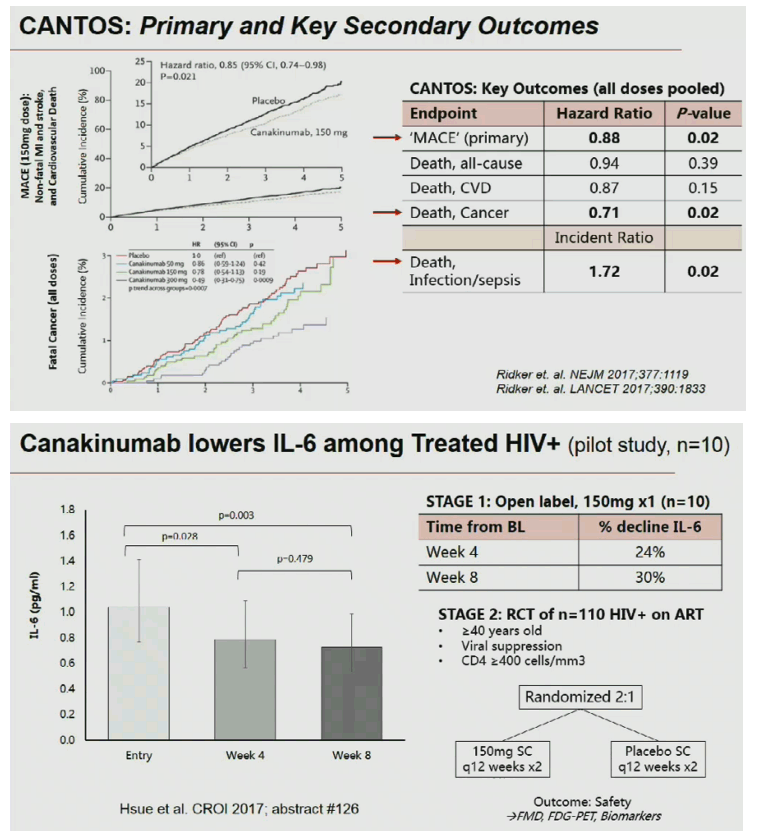
Here is link to panel discussion about all of this is this session at CROI, where they discussed how to conduct clinical trials og=f anti-inflammatory medications & how the different inflammatory markers affects might affect outcomes. Frank Palella in the open discussion said & he is right of course - just finding an anti-inflammatory that improves IL-6 & D-Dimer may not be enough because there are multiple factors that go towards mortality outcomes & improving a comorbidity outcome; this includes mitochondrial damage & microcrobial translocation. - http://www.croiwebcasts.org/console/player/37259?mediaType=audio&&crd_fl=1&ssmsrq=1521836164921&ctms=5000&csmsrq=781
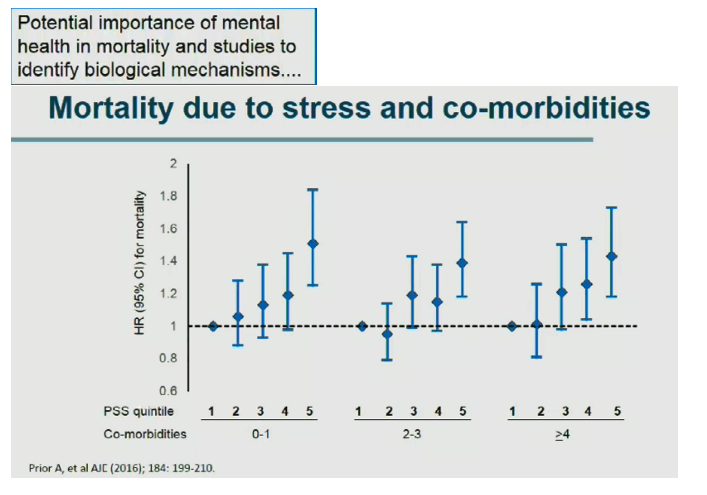
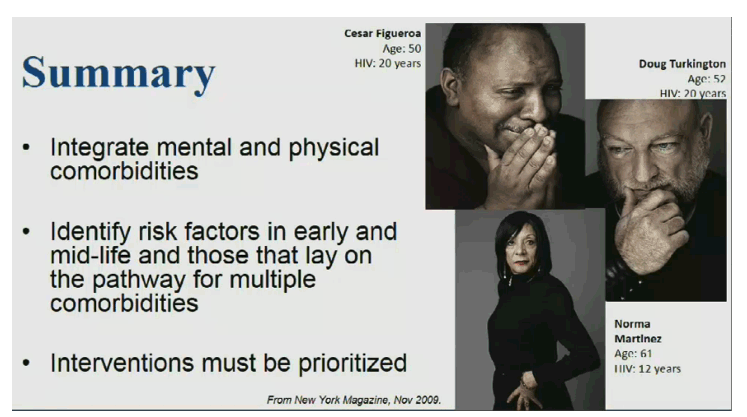

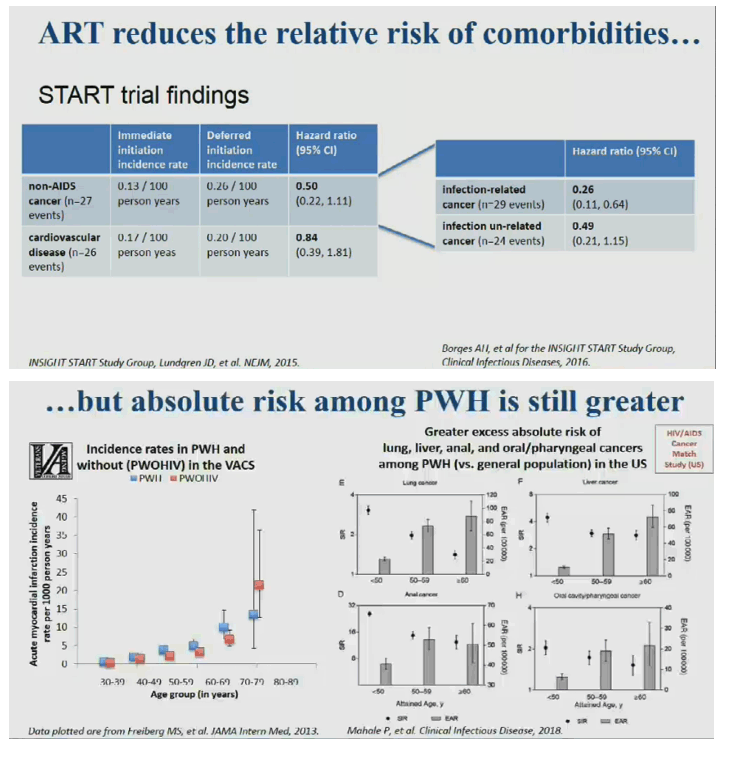
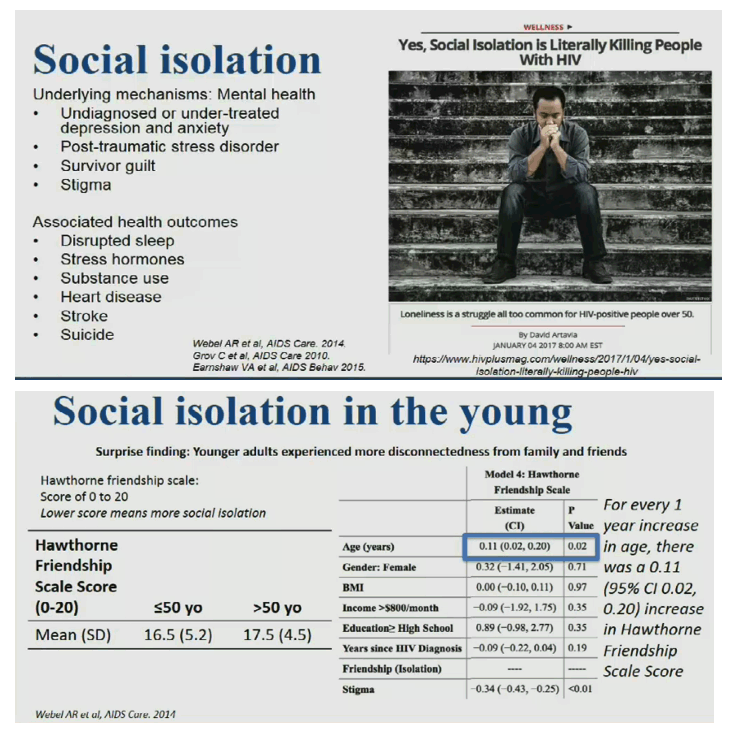
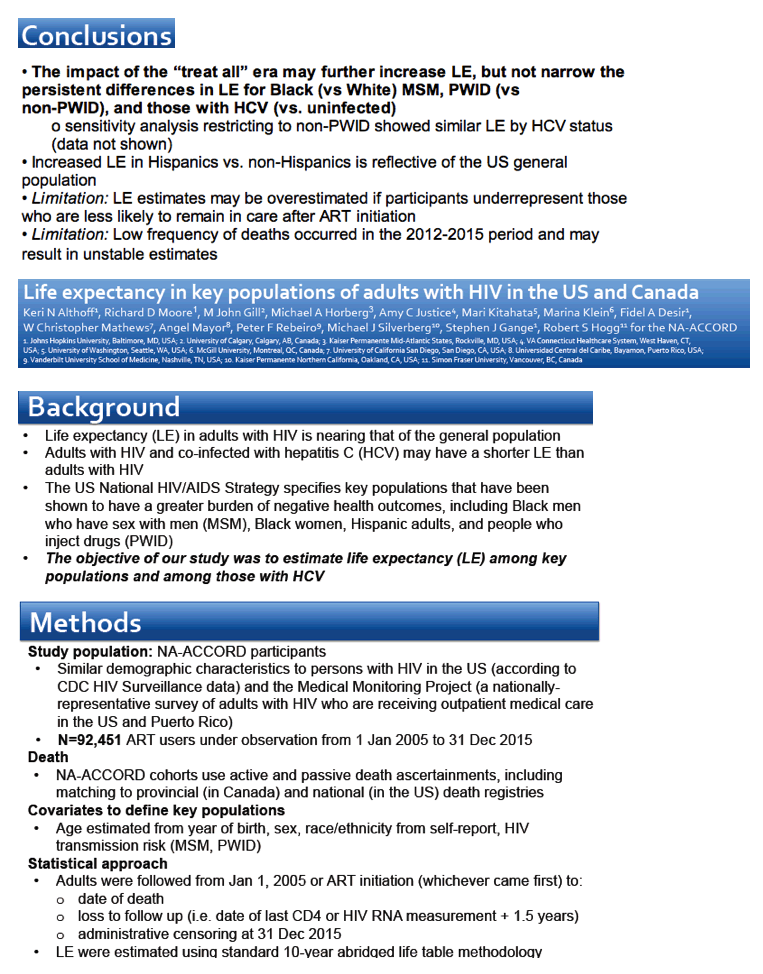
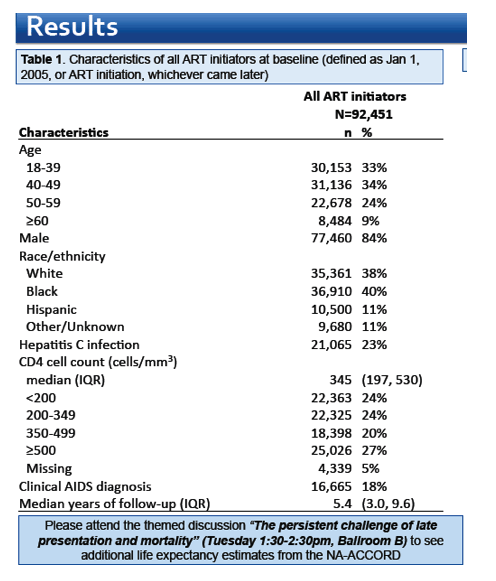
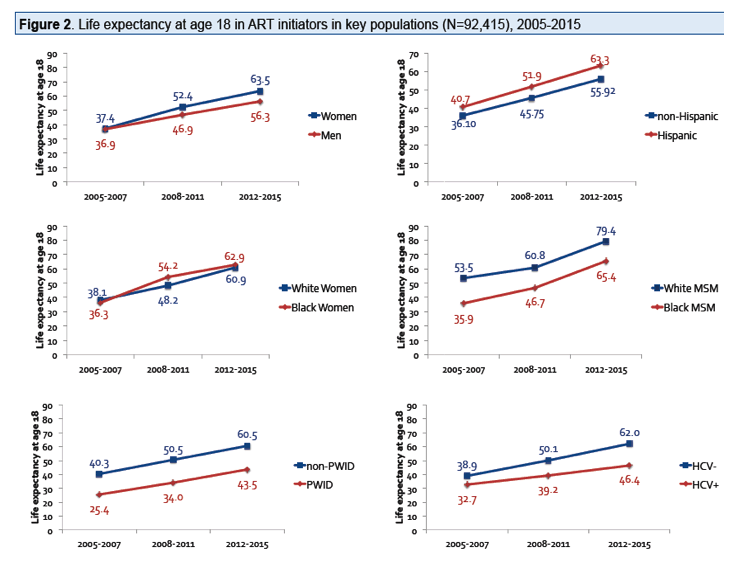
|
| |
|
 |
 |
|
|